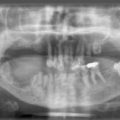Differentiated thyroid cancer
These tumours are divided into papillary and follicular thyroid cancers and are distinguished by their behavior, as they are sensitive to thyroid stimulating hormone (TSH), take up iodine and can produce thyroglobulin. All three of these factors are used in their management. It should be remembered that, in general, differentiated thyroid cancer carries a very good prognosis, with 20-year survival of over 85% in those patients who do not develop distant metastasis.
Papillary thyroid cancer is the most common type of thyroid cancer, accounting for almost 80% of all cases and its incidence is increasing world wide. These tumours are also derived from the follicular cells of the thyroid, and may show psammoma bodies, small flecks of calcification, on microscopy. The distinctive feature of these tumours is that they have characteristic nuclei (Orphan-Annie appearance) and they seem to grow in branching stocks (the so-called papillae). These tumours are often multifocal and they can show more local extension and cervical node involvement and less tendency to haematogenous spread when compared to follicular cancers. Papillary carcinoma is three times more common in women than men with a peak incidence in the third to fourth decade of life.
Follicular thyroid cancer makes up about 10% of thyroid malignancy. It generally affects a slightly older age group than papillary cancer and tends to involve the neck nodes less. Follicular carcinomas are often solitary within the thyroid gland, have a marked tendency to invade the vascular channels and to spread via the bloodstream to distant sites.
Stay updated, free articles. Join our Telegram channel

Full access? Get Clinical Tree




